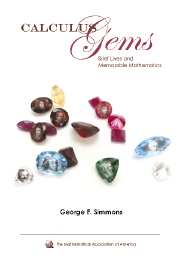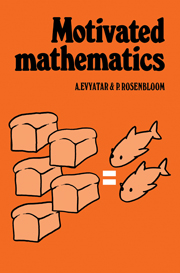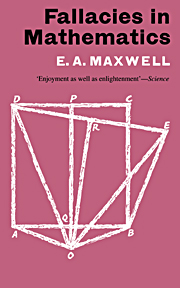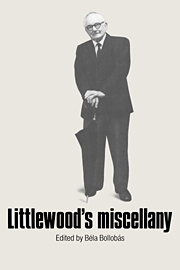Applications of Calculus
Students see how calculus can explain the structure of a rainbow, guide a robot arm, or analyze the spread of AIDS. Each module starts with a concrete problem and moves on to provide a solution. The discussions are detailed, realistic, and pay careful attention to the process of mathematical modeling. Exercises, solutions, and references are provided.
- Real modeling applications for applied students
- Complete-solutions provided
Reviews & endorsements
'It is very hard to find good applications for students. This volume has successfully done it. The benefits to be won with this collection of applications are great.' UMAP Journal
Product details
November 1996Paperback
9780883850855
273 pages
280 × 217 × 17 mm
0.646kg
This item is not supplied by Cambridge University Press in your region. Please contact Mathematical Association of America for availability.
Table of Contents
- Part I. Calculus: I: Derivatives:
- 1. Arbitrating disputes: maximizing quadratic polynomials finds a fair solution to a labor dispute
- 2. Fitting lines to data: minimizing quadratic polynomials finds the regression line to a data set
- 3. Somewhere within the rainbow: minimizing trigonometric functions explains properties of the rainbow
- 4. Three optimization problems in computing: maximizing functions shows how to store and transmit data most efficiently
- 5. Newton's method and fractal patterns: Newton's method generates fractal designs in the complex plane
- Part II. Calculus I: Differential Equations and Integrals:
- 6. How old is the Earth? The exponential decay of rubidium is used to date very old rocks
- 7. Falling raindrops: four differential equation models describe how a raindrop falls
- 8. Measuring voting power: Integrals of polynomials give a measure of voting power
- 9. How to tune a radio: trigonometric integrals explain tuning a radio
- 10. Volumes and hypervolumes: integrals calculate the volumes of objects in three and higher dimensions
- Part III. Calculus II:
- 11. Reliability and the cost of guarantees: probability integrals predict how long equipment will last
- 12. Queueing systems: differential equations and limits analyze waiting lines
- 13. Moving a planar robot arm: derivatives guide a robot arm along a curve
- 14. Design curves: parametric curves are used in computer-aided design of automobiles
- 15. Modeling the AIDS epidemic: differential equations model the spread of AIDS
- 16. Speedy sorting: integrals, limits, and L'Hôpital's rule compare the speed of sorting algorithms
- Part IV. Calculus of Several Variables:
- 17. Hydro-turbine optimization: lagrange multipliers allocate water to hydroelectric turbines
- 18. Portfolio theory: lagrange multipliers choose a best stock-market portfolio.






